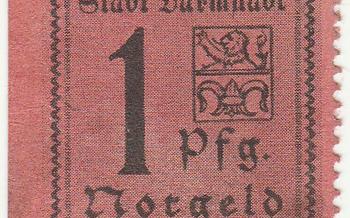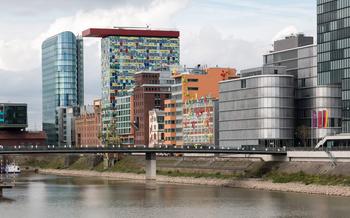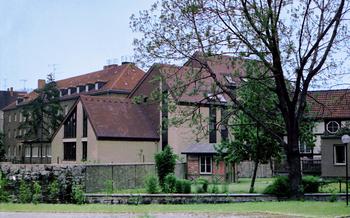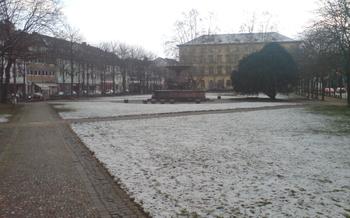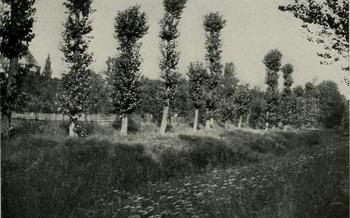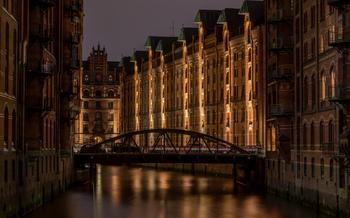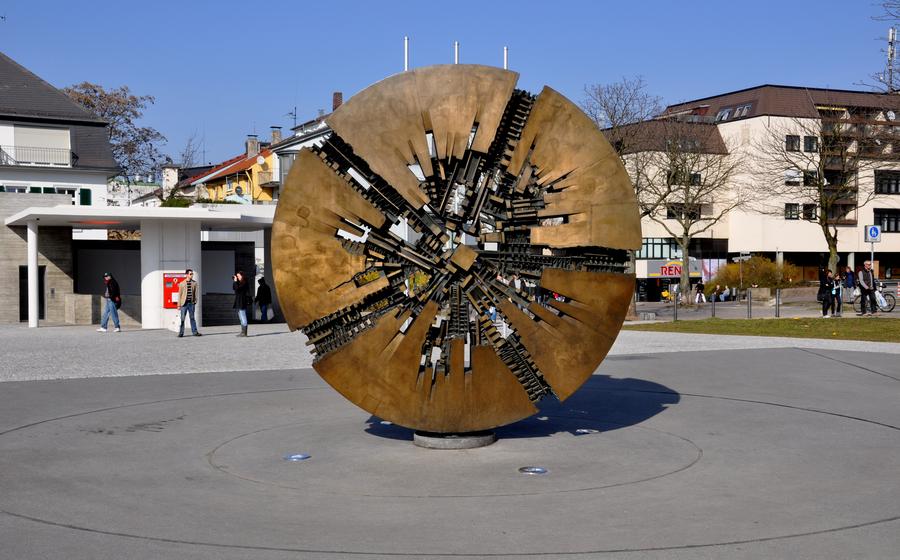
Georg Büchner Denkmal
- Historical Significance of the Monument
- Büchner's Legacy: Exploring His Literary Contributions
- Darmstadt's Literary Heritage: A City of Culture and Arts
- The Monument's Artistic Value: A Masterpiece of Sculpture
- Historical Context: Darmstadt in the 19th Century
- The Monument's Unveiling: A Momentous Occasion
- Literary Landmarks in Darmstadt: A Self-Guided Tour
- Darmstadt's Theaters and Cultural Venues
- Literary Festivals and Events in Darmstadt
- Büchner's Works in Translation: Reaching a Global Audience
- The Monument as a Symbol of Resistance
- Preservation and Conservation Efforts
- The Monument's Impact on Darmstadt's Tourism
Historical Significance of the Monument
The Georg Büchner Denkmal in Darmstadt stands as a testament to the life and legacy of Georg Büchner, a towering figure in German literature and a pioneer of modern drama. Unveiled in 1883, this impressive bronze sculpture immortalizes Büchner's contributions to German literature and his profound impact on the nation's cultural landscape. The monument not only pays homage to Büchner's genius but also serves as a poignant reminder of his revolutionary spirit and his unwavering commitment to social justice.
Büchner's literary prowess, coupled with his political activism, made him a controversial figure during his lifetime. His works, which often explored themes of social injustice and political oppression, were met with resistance and censorship by the authorities. Despite these challenges, Büchner's plays, such as "Danton's Death" and "Woyzeck," left an indelible mark on German literature, pushing the boundaries of theatrical expression and paving the way for a new era of realism and social criticism.
The Georg Büchner Denkmal stands as a symbol of Büchner's enduring legacy and his pivotal role in shaping the course of German literature. It is a tribute to his unwavering commitment to freedom of expression and his tireless advocacy for social change.
Büchner's Legacy: Exploring His Literary Contributions
Georg Büchner's literary contributions were profound and far-reaching, leaving an enduring mark on German literature and theater. His most renowned works include the play "Woyzeck," the novella "Lenz," and the fragmentary drama "Danton's Death." These works, written in the 19th century, continue to be studied, performed, and analyzed for their groundbreaking themes and innovative techniques.
Woyzeck, a powerful tragedy, delves into the psychological deterioration of a soldier driven to madness by social oppression and poverty. Büchner's exploration of mental illness and the individual's struggle against societal forces was groundbreaking for its time.
Lenz, a novella based on the life of the German writer Jakob Michael Reinhold Lenz, explores the themes of madness, creativity, and the artist's place in society. Büchner's portrayal of Lenz's inner turmoil and his struggle to find meaning in his work resonated with many contemporary writers and artists.
Danton's Death, although incomplete, is considered a masterpiece of historical drama. Set during the French Revolution, the play examines the conflict between political idealism and the realities of power. Büchner's depiction of the complex characters and their moral dilemmas remains relevant and thought-provoking.
Büchner's works were not only groundbreaking in terms of their subject matter but also in their use of language and form. He experimented with unconventional narrative structures, fragmented dialogue, and stream-of-consciousness techniques, paving the way for modern literary styles.
His influence on German literature cannot be overstated. Büchner's works inspired subsequent generations of writers, including Bertolt Brecht, Heiner Müller, and Thomas Bernhard, who continued to explore similar themes and push the boundaries of theatrical expression.
Büchner's legacy extends beyond Germany. His works have been translated into numerous languages and performed worldwide, earning him international recognition as a literary giant. His enduring relevance lies in his ability to capture the complexities of the human condition and to provoke thought and debate on social and political issues that remain relevant today.
Darmstadt's Literary Heritage: A City of Culture and Arts
Darmstadt a haven for writers, poets, and artists throughout history, fostering a vibrant cultural scene that continues to thrive today. Notable figures such as Johann Wolfgang von Goethe, Friedrich Schiller, and Clemens Brentano have graced Darmstadt with their presence, leaving an indelible mark on the city's literary landscape.
Darmstadt's cultural institutions, including theaters, museums, and libraries, play a pivotal role in preserving and promoting its literary heritage. The Hessian State Theater, founded in 1810, is renowned for its diverse repertoire, including regular performances of Büchner's plays. The Darmstadt Artists' Colony, established in 1899, has been a hub for artistic experimentation and innovation, attracting renowned artists and writers from across Europe.
Darmstadt's commitment to literature is further evidenced by its status as a UNESCO City of Literature, a designation awarded by the United Nations Educational, Scientific and Cultural Organization (UNESCO). This prestigious recognition acknowledges Darmstadt's significant contributions to literature and its dedication to promoting reading, writing, and cultural exchange.
The city hosts numerous cultural events and festivals throughout the year, celebrating literature and the arts in all their forms. The Darmstadt International Literature Festival, held annually, brings together renowned authors, poets, and literary scholars from around the world for readings, discussions, and workshops. Other events, such as the Büchner Prize, awarded annually to outstanding literary achievements, further underscore Darmstadt's dedication to fostering literary excellence.
The Monument's Artistic Value: A Masterpiece of Sculpture
The Georg Büchner Denkmal stands as a testament to the sculptor Ernst Barlach's mastery and artistic vision. The bronze sculpture, measuring an impressive 2 meters in height, captures Büchner in a moment of contemplation, his gaze fixed upon the distance, lost in thought. Barlach's skillful rendering of Büchner's physical features, from the intricate details of his facial expression to the folds of his clothing, conveys a sense of realism and emotional depth.
The monument's design is characterized by its simplicity and restraint, allowing the viewer to focus on Büchner's figure and the symbolism it embodies. The sculpture's vertical orientation and elongated proportions create a sense of dignity and monumentality, emphasizing Büchner's stature as a literary giant. The use of bronze as the primary material adds a sense of permanence and durability, reflecting the enduring legacy of Büchner's work.
Barlach's attention to detail is evident in the symbolic elements incorporated throughout the sculpture. The laurel wreath adorning Büchner's head represents his literary achievements and recognition as a poet and playwright. The quill pen in his hand symbolizes his role as a writer, capturing the essence of his creative genius. These subtle details enhance the monument's narrative, inviting viewers to contemplate Büchner's contributions to German literature.
The Georg Büchner Denkmal is not merely a representation of the writer himself; it is a work of art that transcends its commemorative function. Barlach's skillful craftsmanship and symbolic elements elevate the monument to a level of artistic significance, making it a masterpiece of sculpture in its own right. It stands as a testament to Barlach's talent and his ability to capture the essence of Büchner's spirit and legacy.
Historical Context: Darmstadt in the 19th Century
Darmstadt, during Georg Büchner's lifetime, was a city undergoing significant transformation. In the early 19th century, it was a small town steeped in tradition, but by the time Büchner arrived, it was rapidly evolving into a vibrant cultural and intellectual hub. The city became a center for revolutionary ideas and political activism, fueled by the presence of prominent intellectuals and artists.
Darmstadt was also experiencing a surge in industrialization, leading to economic growth and social change. The city's population swelled with the arrival of workers from various parts of Germany, creating a diverse and dynamic urban environment. This influx of new ideas and perspectives contributed to the city's intellectual and cultural ferment.
Büchner, upon his arrival in Darmstadt, found himself immersed in this vibrant atmosphere. He became actively involved in political and literary circles, eagerly participating in debates and discussions on social and political issues. The city's intellectual climate provided a fertile ground for his literary pursuits, shaping his perspectives and inspiring his revolutionary works.
Darmstadt, in the 19th century, was a city poised at the cusp of modernity. It was a place where tradition and progress collided, where new ideas flourished, and where individuals like Georg Büchner left an enduring mark on German literature and history. The Georg Büchner Denkmal stands as a testament to this transformative period, honoring the legacy of a man who embodied the spirit of his time.
The Monument's Unveiling: A Momentous Occasion
On a crisp autumn day in 1874, Darmstadt witnessed a gathering of notable figures, dignitaries, and citizens as they assembled for the unveiling ceremony of the Georg Büchner Denkmal. The event was meticulously planned and organized by a committee dedicated to honoring the legacy of the city's beloved playwright and revolutionary.
Among the distinguished guests were Büchner's family members, literary scholars, and representatives from the city's cultural institutions. The atmosphere was charged with anticipation as the crowd eagerly awaited the unveiling of the monument, which stood shrouded in a veil of secrecy.
As the mayor of Darmstadt stepped forward to deliver the inaugural speech, he eloquently spoke of Büchner's enduring impact on German literature and his significance as a symbol of freedom and resistance. The crowd listened intently, their hearts swelling with pride and admiration for the young genius whose works had left an indelible mark on their city's cultural identity.
With a dramatic flourish, the veil was finally lifted, revealing the bronze sculpture in all its glory. A collective gasp of awe rippled through the crowd as they beheld the lifelike depiction of Büchner, his piercing gaze seemingly reaching beyond the confines of the monument. The unveiling ceremony was a resounding success, etching itself into the annals of Darmstadt's cultural history as a momentous occasion that celebrated the life and legacy of one of Germany's most influential literary figures.
Literary Landmarks in Darmstadt: A Self-Guided Tour
For a deeper dive into Darmstadt's literary heritage, embark on a self-guided tour of significant sites related to Büchner and other notable writers. Start at the Georg Büchner Denkmal, then visit the Büchnerhaus, where the author lived and wrote. Continue to the nearby Luisenplatz, home to the State Theater, which often stages productions of Büchner's plays. From there, head to the Prinz-Georg-Palais, which houses the Hessian State Library, where Büchner's manuscripts and letters are preserved. Finally, end your tour at the Stadtkirche Darmstadt, where Büchner's funeral was held in 183Along the way, explore other literary landmarks, such as monuments to Johann Wolfgang von Goethe and Friedrich Schiller, and visit the Justus von Liebig Museum, dedicated to the renowned chemist and writer. Create your personalized literary journey and discover the rich literary heritage that Darmstadt holds.
Darmstadt's Theaters and Cultural Venues
Darmstadt's vibrant theater scene provides a dynamic platform for Büchner's plays to come to life. The Staatstheater Darmstadt, a renowned theater company, regularly stages captivating performances of Büchner's works, offering audiences a chance to experience the power of his words on stage. Other notable venues, such as the Kleines Haus and the Kammerspiele, also host productions of Büchner's plays, allowing audiences to engage with his ideas in intimate and experimental settings.
Beyond its theaters, Darmstadt boasts a range of cultural venues that celebrate Büchner's legacy. The Georg Büchner Museum offers visitors a comprehensive insight into the author's life and work, showcasing his manuscripts, personal belongings, and a wealth of information about his literary contributions. The Büchnerhaus, where Büchner lived during his time in Darmstadt, has been carefully restored and now serves as a cultural center, hosting exhibitions, readings, and discussions related to Büchner and his literary circle.
Attending a performance of Büchner's plays in Darmstadt is a profound experience that allows visitors to connect with his ideas and emotions on a deeper level. Whether at the grand Staatstheater or a smaller, more intimate venue, audiences are transported to the worlds created by Büchner's words, gaining a fresh perspective on his enduring relevance in contemporary society.
Literary Festivals and Events in Darmstadt
Darmstadt's vibrant literary scene comes alive during its annual festivals and events, providing a platform for celebrating literature and the arts. Among the highlights is the "Büchner-Preisverleihung," an esteemed literary award ceremony honoring outstanding achievements in German-language literature. This prestigious event attracts renowned authors, literary critics, and enthusiasts from across the country.
The city also hosts the "Darmstädter Literaturtage," a multi-day literary festival featuring readings, discussions, and workshops with established and emerging writers. This festival offers a diverse program of literary events, allowing visitors to engage with authors, explore new genres, and delve into the world of books.
For those interested in Büchner's legacy, the "Georg-Büchner-Tage" is an unmissable event. This festival celebrates the life and works of Büchner through exhibitions, readings, and performances, providing a unique opportunity to explore his literary genius and the impact of his writings on German literature.
These literary festivals and events not only showcase Darmstadt's rich literary heritage but also foster a sense of community among book lovers, writers, and cultural enthusiasts. They offer a vibrant and inclusive space for literary exchange, inspiration, and the celebration of the written word.
Büchner's Works in Translation: Reaching a Global Audience
Georg Büchner's literary genius transcended the boundaries of language, as his works have been translated into numerous languages, allowing readers worldwide to experience his profound insights and groundbreaking storytelling. Translating Büchner's complex prose, however, presented unique challenges. His mastery of language, intricate symbolism, and philosophical depth required translators to strike a delicate balance between preserving the essence of his writing and making it accessible to diverse audiences.
Despite these challenges, Büchner's works have found a receptive global readership. His plays, such as "Danton's Death" and "Woyzeck," have been performed in theaters around the world, captivating audiences with their raw emotional power and exploration of universal themes. His novellas, including "Lenz" and "Leonce and Lena," have been translated into dozens of languages, allowing readers to delve into Büchner's introspective and often darkly humorous narratives.
The translations of Büchner's works have played a crucial role in establishing his international reputation as a literary giant. Through these translations, readers from different cultures and backgrounds have been able to engage with Büchner's ideas and experience the transformative power of his writing. Büchner's universal themes of social injustice, alienation, and the human condition have resonated deeply with readers worldwide, cementing his status as a literary icon beyond the borders of his native Germany.
The Monument as a Symbol of Resistance
Beyond its artistic and cultural significance, the Georg Büchner Denkmal holds a profound symbolic meaning as a representation of resistance and dissent. Büchner, known for his revolutionary ideas and activism, channeled his political beliefs into his literary works, challenging the established order and advocating for social change. The monument, with its depiction of a defiant and unwavering Büchner, serves as a reminder of his unwavering spirit and commitment to justice. It stands as a testament to Darmstadt's role as a hub of intellectual dissidence, where progressive thinkers and revolutionaries gathered to challenge the status quo. The monument's symbolic power resonates with those who value freedom of expression, inspiring them to stand up against oppression and fight for their beliefs.
Preservation and Conservation Efforts
The Georg Büchner Denkmal has undergone several restoration and conservation projects over the years to ensure its preservation for future generations. The first major renovation took place in 1987, focusing on cleaning and repairing the bronze sculpture. In 2013, a comprehensive restoration project was undertaken to address structural issues and prevent further deterioration. The monument was carefully dismantled, each piece meticulously cleaned and restored, and the entire structure was reassembled using modern techniques to ensure its stability.
The preservation of the Georg Büchner Denkmal is of utmost importance, not only for its artistic and historical significance but also for its role in promoting Darmstadt's literary heritage. The monument stands as a testament to Büchner's legacy and serves as a reminder of the city's rich literary history. By investing in its preservation, Darmstadt reaffirms its commitment to safeguarding its cultural heritage and ensuring that future generations can continue to appreciate and learn from this iconic landmark.
The Monument's Impact on Darmstadt's Tourism
The Georg Büchner Denkmal has significantly contributed to Darmstadt's reputation as a literary city, attracting a growing number of tourists interested in exploring its rich cultural heritage. The monument serves as a powerful symbol of Darmstadt's commitment to preserving and celebrating its literary legacy.
By highlighting the life and works of Georg Büchner, the monument has positioned Darmstadt as a must-visit destination for literary enthusiasts worldwide. Visitors from across Germany and beyond come to Darmstadt to pay homage to Büchner and immerse themselves in the city's literary atmosphere.
The monument's popularity has played a crucial role in boosting Darmstadt's cultural tourism strategy. By promoting its literary heritage and showcasing the monument as a key attraction, the city has successfully attracted a new segment of tourists interested in exploring its literary landmarks and events.
The influx of literary tourists has had a positive impact on Darmstadt's economy. These visitors often engage in various tourism-related activities, such as visiting bookstores, attending literary events, and exploring the city's cultural attractions. This increased tourism activity generates revenue for local businesses, including hotels, restaurants, and cultural institutions.
Overall, the Georg Büchner Denkmal has become a valuable asset to Darmstadt's tourism industry. By attracting literary tourists and promoting the city's cultural heritage, the monument has contributed to Darmstadt's transformation into a vibrant and dynamic literary destination.
